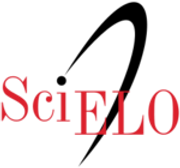La representación arquitectónica del pasado: Significado versus vacío en La sexta lámpara de Pablo de Santis
DOI:
https://doi.org/10.21754/devenir.v6i11.637Palabras clave:
arquitectura, literatura, modernismo, literatura argentinaResumen
¿Cuáles son los vasos comunicantes entre arquitectura y literatura, entre lo concreto y habitable, y cuál la brecha entre lo lingüístico y la inhabitabilidad del espacio que se crea a través de las palabras? El objetivo de este artículo es evidenciar la complementariedad y las diferencias entre ambas disciplinas, a través de la novela La Sexta Lámpara (2004) de Pablo De Santis, que pone en el centro de su trama el desarrollo histórico de la arquitectura decimonónica y la moderna, los proyectos utópicos que derivan de ambas formas, y cómo se diferencian en el espacio geográfico europeo y americano. Para establecer estas conexiones y desarrollarlas, se emplean las ideas que David Spurr plantea en su libro Architecture & Modern Literature (2012).
Descargas
Citas
Borges, J. L. (2000). El Aleph. Lima, Perú: El Comercio.
Borges, J. L. (1984). Ficciones. Bogotá, Colombia: Oveja Negra.
De Santis, P. (2000). Filosofía y Letras. Lima, Perú: Adobe.
De Santis, P. (2008). La sexta lámpara. Buenos Aires, Argentina: Booket.
Eliot, T.S. (2001). La tierra baldía. Recuperado de http://www.madrid.org/fo/2010/es/prensa/pdf/poema_the_waste_land.pdf
Hagen, R. (1994). Brueghel. Colonia, Alemania: Taschen.
Heidegger, M. (1951). Construir, habitar, pensar. Recuperado de http://www.geoacademia.cl/docente/mats/construir-habitar-pensar.pdf
Hugo, V. (1850). Nuestra Señora de París. Madrid, España: Gaspar y Roig.
Koolhaas, R. (2012). El espacio basura. Recuperado de http://citywiki.ugr.es/wk/images/c/c0/Koolhaas_Espaciobasura.pdf
Martínez, C. & Bengoa, G. (2016). Habitares: Los croquis de la palabra. Mar del Plata, Argentina: EUDEM.
Ruskin, J. (1989). The seven lamps of architecture. Nueva York: Dover.
Spurr, D. (2015). Architecture and literature. Michigan: The University of Michigan Press.
Descargas
Publicado
Cómo citar
Número
Sección
Licencia
Los artículos publicados por DEVENIR pueden ser compartidos a través de la licencia pública internacional Creative Commons: CC BY 4.0. Permisos lejos de este alcance pueden ser consultados a través del correo revistas@uni.edu.pe











